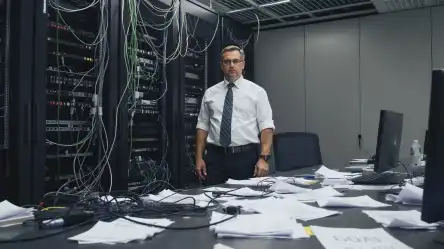CIOs should lead strategy and orchestrate infrastructure upgrades as use cases like smart contracts and asset tracking gain traction.

Once considered cutting-edge, even somewhat fringe financial technologies, blockchain and stablecoin are steadily gaining traction as a launchpad for enterprise use cases that include new payment rails, smart contracts, and asset tracking.
Blockchain — which functions as a decentralized and immutable ledger for transactions across a peer-to-peer network — is most associated with cryptocurrency yet has applicability far beyond financial use cases. The technology underpins a variety of applications already delivering business value for enterprises. Among them: Tracking goods across a supply chain, tokenization for faster payments processing, secure management of patient data for healthcare entities, and a means for retailers to verify the authenticity and provenance of luxury goods. While slightly less familiar, stablecoins — digital assets pegged to government-backed currencies like the dollar — are starting to enable faster settlements and more automated financial workflows.
Interest — and adoption — of both technologies are accelerating due to several factors. For starters, the regulatory landscape is shifting and becoming more clear. The Europe Union’s Markets in Crypto-Assets (MiCA) framework is now in effect, and the Guiding and Establishing National Innovation for U.S. Stablecoins (GENIUS) Act, signed in July, eases previous regulatory restrictions. There’s also been an uptick in new product and technology introductions. Ecosystems are starting to converge and customer demand is intensifying as markets mature and new opportunities arise.
The message for CIOs is clear: It’s time to move beyond wait-and-see mode and start actively exploring the technologies and potential use cases. “We’re at an inflection point, getting away from the skepticism to the ability to deploy and scale,” says Aditi Lyall, principal at PwC. “Blockchain and stablecoin are increasingly part of the foundation CIOs can use to provide strategic value, just like cloud has been for the past decade and much like AI is today.”
CIO takes an orchestration role
Given the financial nature of both technologies, it’s a common assumption that blockchain and stablecoin are the CFO’s terrain. While financial leaders certainly play a big role, IT execs should help lead planning and execution of these technologies given the impact on critical IT systems and processes — including ERP, data management and governance, cybersecurity, and cloud and API integration strategies. Success with any blockchain or stablecoin deployment will depend on your ability to establish effective system interoperability, integration with middleware, and shared workflow orchestration — all part of your CIO jurisdiction.
“CIOs looking at how to better compete in their markets to give consumers a better experience or to uplevel internal operations can’t afford to sit back,” Lyall says. “CIOs should be the orchestrators and enablers of use cases as everyone tries to see what pain points they can solve with blockchains.”
As part of this new remit, CIOs should take the following steps:
- Assess readiness and set objectives: Prior to any stablecoin or blockchain implementation, CIOs should access existing systems and processes, identifying what controls need updating and what process changes need to be underway. Working with the CFO and line of business leaders, clarify what the enterprise hopes to gain through use of the new technologies so there are agreed-upon objectives and outcomes.
- Engage stakeholders and explore uses cases: Stand up proofs-of-concept to test drive potential use cases. Leverage projects that demonstrate clear business value to build alignment across business functions and to help foster change management.
- Define a strategic vision and roadmap: CIOs should play a key advisory role, guiding and educating colleagues, orchestrating strategy across lines of business, and evaluating potential partners. There is also a critical IT infrastructure component, including developing a roadmap for IT architecture updates, system integration, data management and reporting, cybersecurity, and access privileges.
At PwC, a cross-functional team of leaders saw an opportunity to help solve corporate travel pain points using blockchain technologies. Working with KAYAK and Blockskye, PwC’s Procurement, Travel, and Finance teams created an innovative online booking tool built on blockchain technology that removes unnecessary intermediaries. The system gives employees more flexible travel options while requiring less manual effort and at less cost. The new booking tool serves as a single source of truth for all travel parties, enabling near real-time reporting and data transparency. The results have been a 10% reduction in intermediary fees on typical airline ticket purchases as well as a 30% improvement in call answer time for travel agents. Since implementing the blockchain-based travel system, PwC has realized more than $1 million in ticket savings.
To learn more, visit AI agents for IT: PwC









